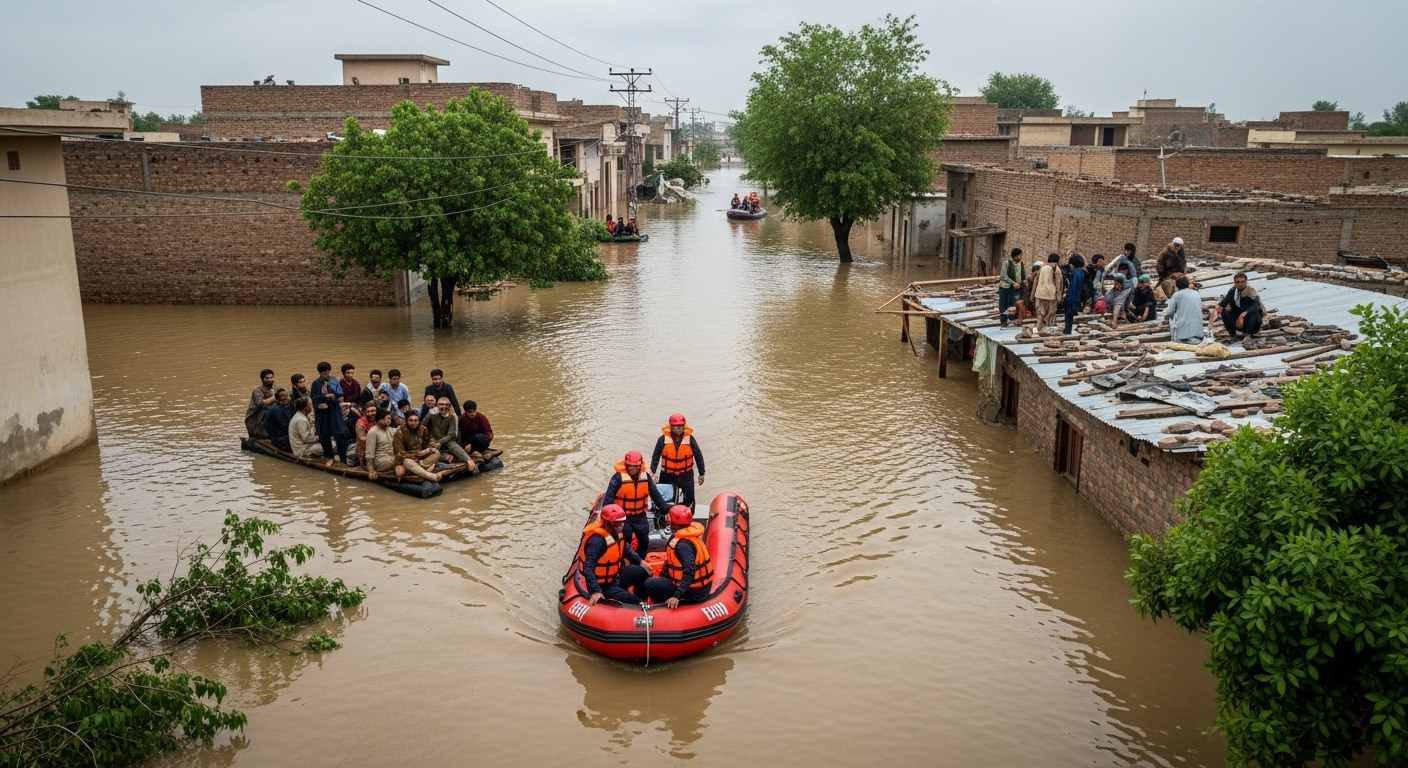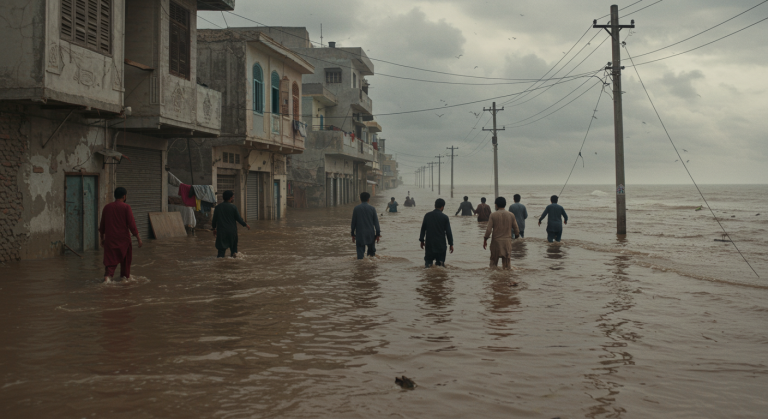Pakistan Rescue Teams Under Scrutiny Amid Monsoon Flood Tragedies and Swat River Catastrophe

Pakistan’s rescue teams have once again found themselves in the national spotlight following a tragic week of monsoon floods and a heartbreaking incident on the Swat River. Over 46 lives have been lost and countless communities left devastated — collectively raising critical questions about disaster preparedness and emergency response in the country.
Widespread Floods Across Provinces
Since June 25, relentless monsoon rains and sudden flash floods have battered multiple provinces. According to the National Disaster Management Authority (NDMA), 46 people died over the past week—22 in Khyber Pakhtunkhwa (KP), 13 in Punjab, seven in Sindh, and four in Balochistan.
In a separate report, at least eight more lives were claimed by recent flash floods, bringing the national toll to at least 54 over just a few days . The most haunting images emerged from Swat Valley, where tourists picnicking along riverbanks were swept away in surging waters—some stranded on shrinking rocky islands for over an hour before rescue teams arrived
The Swat River Horror: Rescue Response in the Crosshairs
A powerful scene emerged in video footage: family members, drenched and shivering, stranded on a riverbank islet, crying out for help. Official sources confirm 12 bodies have already been recovered, including that of a child found downstream near Charsadda. One woman from the family remains missing.
Social media erupted in outrage, with people asking: “Why did rescue services take so long?” Critics point to delayed riverine alerts, insufficient local early warning systems, and teams that only seemed to arrive after the worst had happened .
Provincial officials have defended themselves; a spokesperson for KP’s Chief Minister explained that rough weather made it unsafe to deploy the CM’s helicopter—but offered few details on when rescue boats and personnel actually reached the site .
In Swat alone, 14 lives were claimed by the floods, and six people were injured
Overall, the river surge that swept through one family and countless other victims has become emblematic of national rescue capacity in a monsoon-struck season.
Beyond Swat: Multitude of Rain-Related Tragedies
Punjab and Sindh also saw multiple fatalities due to roof collapses, electrocutions, and localized flash flooding. Between June 25–28, 14 lives were lost and over 43 people injured.
These incidents indicate that even densely populated cities remain vulnerable to sudden downpours.
Emergency services were mobilized to provide medical care and evacuations, yet recurring fatalities suggest infrastructure limitations. Many note recurring failures: inadequate drainage systems, substandard construction, and outdated communication channels for issuing timely flood warnings.
Alarming Outlook: Monsoon Just Beginning
Meteorological departments warn that this summer’s monsoon season—which typically spans July through September—is expected to continue. A westerly wave persisting across northern Pakistan may bring further heavy rainfall in coming days.The NDMA and PDMA have issued warnings, urging people to avoid riverbanks and remain vigilant
Rescue Teams in the Spotlight
Rescue 1122, the provincial emergency service in Punjab and KP, reported deploying dozens of teams. In one notable instance, teams used snorkel gear to rescue 22 residents from a partially collapsed building in Karachi’s Kharadar area.
Pakistan Army Aviation and SSG operatives were mobilized to the Swat region and other flood-stricken zones on standby, though officials confirm rugged terrain and weather constraints delayed helicopter rescue missions.
Civil administration and volunteers frequently partnered with emergency units, particularly near Swat, assisting in boat rescues and providing ground-level aid as floodwaters surged.
While these forces have saved many lives, criticism persists about delayed response times and fragmented communication between agencies.
Calls for Reform: What Needs to Change?
Early‑warning systems: Locals and experts stress the importance of enhanced radar stations, river flow monitoring, and SMS alert systems in vulnerable areas.
Robust coordination:
Coordination between Rescue 1122, Pakistan Army, Civil Defence, and NDMA must be streamlined under a unified command during emergencies.
Community training:
Widespread flood–preparedness workshops and volunteer training can empower communities to act swiftly before professional help arrives.
Infrastructure improvements: Urgent investments in storm drainage, reinforced buildings, and safe evacuation routes are essential, especially in rural and peri‑urban areas.
A Tragic Reminder with Hope
Despite the immense human toll, many survivors credit the bravery of rescue officials for saving lives. But as Pakistan faces recurring climate-driven calamities, experts warn that reacting after tragedy strikes isn’t enough. A proactive shift—combining technology, coordination, and community empowerment—is now vital.
As the monsoon deepens in July, August, and September, authorities must establish a resilient framework where early alerts, swift deployment, and collaborative response prevent more tragedies like Swat from rewriting the country’s story again.
Pakistani lives hung in the balance last week, but what remains to be seen is whether institutions will finally learn from this disaster—and make the necessary changes to ensure lives are protected before disaster strikes again.
